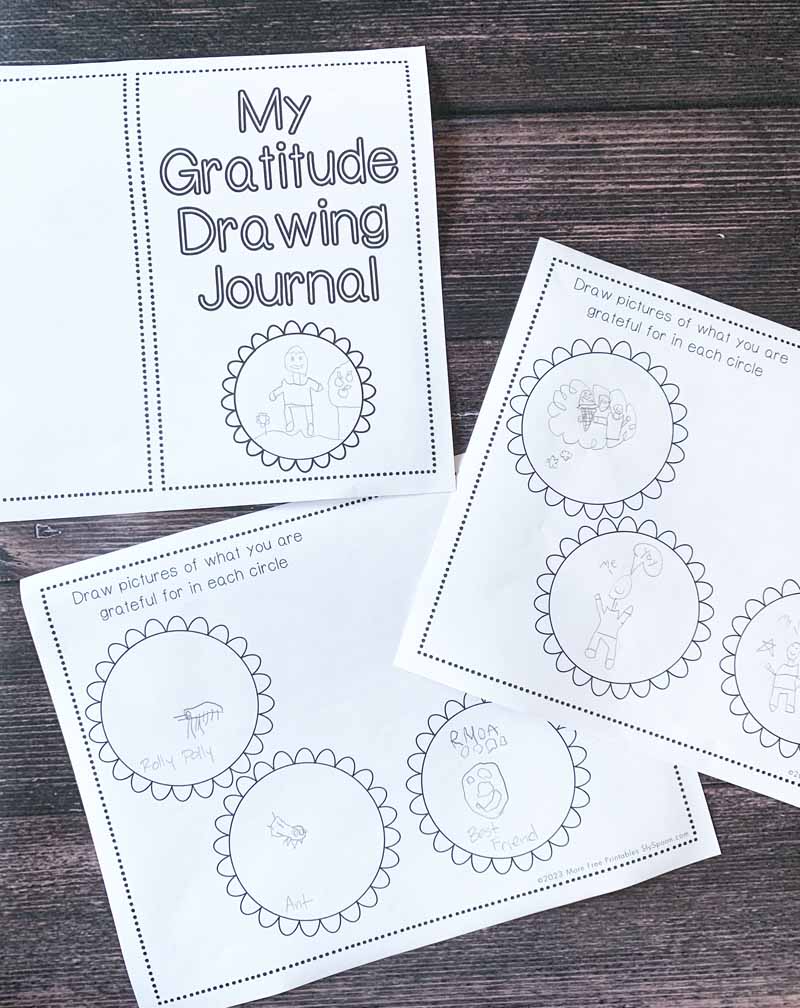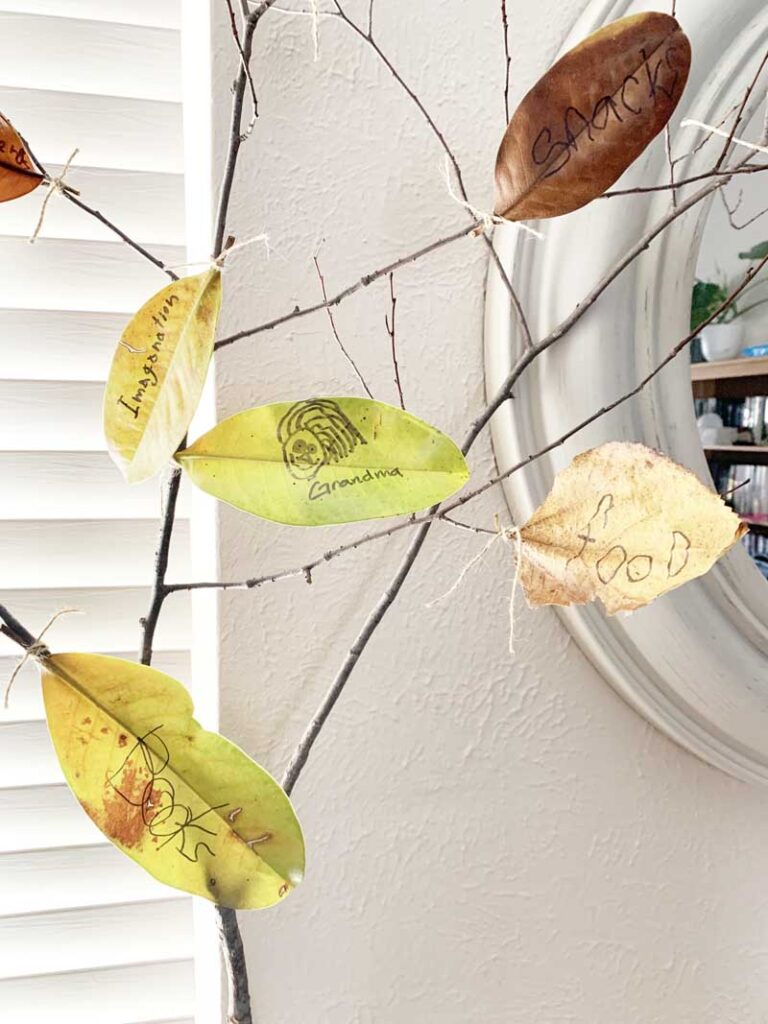Raising grateful children has a far-reaching impact – not only do their attitudes and behaviors improve, but their relationships with family and peers do, too. Recent studies show that children who continue with gratitude practice enjoy greater happiness, better mental and physical health, and a stronger sense of purpose.
But how do you get them to understand and embrace this invaluable life skill?
Here are 5 easy ways to teach children with gratitude practice. From giving to others, to creative journaling and deep conversations, these helpful strategies will help children build self confidence, foster positive relationships, and see the good in the day to day in new ways.
1. Gratitude Jars or Journals
A gratitude jar is a fantastic introduction to seeing and feeling more gratitude for children old enough to read and write. Make an activity where you and your child/children decorate a jar, then encourage them to write down something they are grateful for each day and add that slip of paper to their jar.
If jars aren’t your style or if you’re working with a child too young to read or write, consider having either a gratitude journal or gratitude picture journal where they can write or draw a picture of something they are grateful for daily.
Encourage them to be specific, reflecting on even the smallest moments or acts of kindness.
At the end of the week, gather together and share the notes from the jars or journals, highlighting the importance of gratitude, and how recognizing the positive things in our experience can help us find more joy in the day to day. Or, use gratitude journal pages.

2. Thank You Cards
Teach children the power of expressing gratitude through handwritten or drawn notes. Provide your children with materials to create thank you cards for their family, friends, teachers, or anyone who has made a positive impact on their lives. Encourage your child/children to think about specific examples of this person that they appreciate and what that person means to them. Encourage them to send or share the note they’ve written, but to also make it a habit to write letters of kindness.
3. Volunteer Together
Organize community service activities where children can directly contribute and make a difference. Assist them in serving meals at a homeless shelter, participating in a local cleanup campaign or even just tidying up at a park or nature area that you enjoy, or engaging in other acts of kindness that align with their interests.
If you need ideas of where to look for volunteer opportunities consider checking out the app “JustServe” which allows you to search for service needs local to you. From there you can filter down to the types of service needed or the age ranges that are appropriate for your family. We’ve found wonderful opportunities through there that we’ve been able to do from home, like writing kind notes to people in various difficult circumstances, or gathering and donating supplies to local refugees, or engaging with elderly at local nursing homes with activities.
Bottom line is that children of all ages are able to participate in service, and doing the work often helps you feel both love and gratitude for the work you’re doing as well as what you have.
4. Gratitude Tree
A great visual representation of gratitude is a gratitude tree. Use construction paper to create a trunk and leaves. Each day, have children write something they are grateful for on a leaf and attach it to the tree. This visual representation of gratitude makes it easy to see the accumulation of blessings in their lives, and if you want to expand it consider not allowing repeat items. After the low hanging fruit is added to your tree your child will hopefully have to change to look around them and expand their perspective as the days go by as they look for more things to be grateful for.
We did the natural version of the tree, and if you can see our gratitude tree here.

5. Gratitude Scavenger Hunt
Have a scavenger hunt where you look for the wonderful things that exist around you. Have children search for these things and name what they are as they see them, and talk about why they are grateful for them. You could even have them take pictures of the things they see and are grateful for to talk about later or as a group as they learn to have awareness and appreciation for everyday blessings.
Need some ideas where to start looking? Consider that they might be grateful for:
- A warm hug from their caregiver
- Their favorite stuffed animal
- Colorful crayons to create beautiful artwork
- A yummy snack or treat
- Playing with friends and making new ones
- The sound of laughter
- Jumping on a trampoline
- Playing in a sandbox
- Exploring nature and finding bugs or flowers
- Blowing bubbles and chasing them
- Going on a swing at the playground
- Splashing in puddles after rain
- Dressing up in costumes and pretending to be someone else
- Building a tower with blocks and knocking it down
- Singing and dancing to their favorite songs
- Storytime with a loved one
- Going on a family outing or picnic
- Playing with playdough and molding different shapes
- Discovering new books at the library
- Riding a bicycle or tricycle
- Receiving a surprise gift or toy
- Hugs and kisses from grandparents
- Watching their favorite cartoon or movie
- Exploring a new playground or park
- Playing in the rain with an umbrella
- A day full of sunshine and blue skies
- Splashing in a pool or running through a sprinkler
- Eating ice cream or their favorite dessert
- Going on a fun adventure to the zoo or museum
- Falling asleep with their favorite bedtime story.
Teaching children to practice gratitude can have a profound impact on their attitudes, behaviors, and relationships. By implementing simple strategies like gratitude jars or journals, thank you cards, volunteering together, creating a gratitude tree, and organizing a gratitude scavenger hunt, children can develop a stronger sense of self-confidence, build positive relationships, and learn to appreciate the small joys in life. By cultivating gratitude in our children, we are equipping them with an invaluable life skill that will lead to greater happiness, improved mental and physical health, and a deeper sense of purpose.

To help you out, I’ve created a simple 30 Day Gratitude Challenge Printable. Each person in your family should have their own printable. At dinner time or bedtime, let your kids write what they are thankful for that day. There is enough space on the printable to let your kids write what they are thankful for that day.
Younger kids can use the printable with prompts for each day. Even preschoolers can take on the challenge with the thank you prompts on the printable. Actually, I’m sending a copy to my daughter who has a 3-year old. The prompts are a simple way to stay focused on thankfulness all of November.
For, older kids and parents, I suggest writing at least 3 things you are thankful for each day. Once you sign up, you’ll receive an email with specific ideas for older kids.
Be sure to check back here (or sign up for our email updatesat the top of this post) throughout November for lots of great ideas to help you teach gratitude to your kids. For now, take the 30 Day Gratitude Challenge and get your free printables below.
Hi, I’m Brittney, a frazzled mom of 4 tiny tornadoes who occasionally moonlight as children. When I’m not negotiating with the miniature CEOs or making moon eyes at my husband, I’m a picture book author, a photographer, and a self-proclaimed mastermind of free homeschool resources. I’m slightly addicted to crafting and conjuring up fresh ideas, and my chaotic brain never seems to rest. I may be outnumbered, but I’m armed with humor and a never-ending supply of caffeine! Follow along with me here: SlySpoon.com, Pinterest, Instagram, TikTok, Facebook
Grand Prize Giveaway $205.31
Be sure to enter our Grand Prize Giveaway ($205.31) and say thank you to our awesome sponsors for making 22 Days of Thanks possible. How can you say thank you?
Take a few moments and enter the giveaway with all the options on the form below.

I know there are lots of entries, but our sponsors spent their time and money to make this giveaway possible for you. So, take the time to enter each option listed. Besides, you’ll have a better chance of winning when you use all the entry options.
a Rafflecopter giveaway




